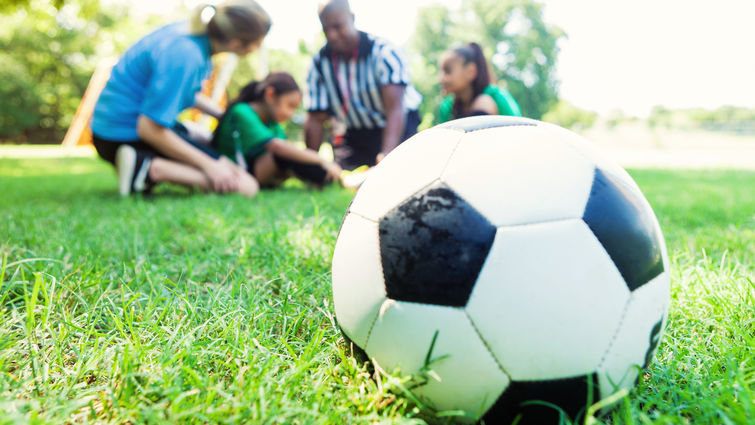
Cooler temperatures, shorter days, the start of school — fall is upon us and so is autumn sports season! Whether you’re a parent of a soccer athlete, the routine runner or the athletic weekend warrior, the crisp season beckons for sport fun — and with it, the risk for sports injury. Joseph N. Liu, MD, an orthopedic surgeon for Loma Linda University Medical Center, offers these five tips to prevent injuries while enjoying your favorite sport.
- Body basics to remember. The key to success behind every game or workout is taking care of the body. This means ensuring you are hydrated, eating the right foods to fuel your body for the activity and are not fatigued. “Whether you’re an athlete or coach, knowing when you’re fatigued is vital to preventing an injury,” Liu says. “When an individual is fatigued, they do not have the same body control, perception and ability to react to prevent their body from getting injured.” Liu says it’s important to remember that fatigue is one of the factors that can be controlled in preventing injury by ensuring athletes get proper rest and preventing them from playing if they display signs of fatigue.
- Always warm-up. Before any game or workout, you should start with a warm-up. Liu says that there is no one warm-up that applies to everyone; rather, the warm-up needs to be tailored for you. “Good warm-ups are sports specific, meaning that the exercises and stretches performed should emulate what the athlete will be doing and move the muscle groups that are most used in that sport.” Liu notes that proper warm-up should begin a couple of hours before the sporting event with stretches and some form of dynamic core exercises. “Core is critical. Everything we do with our body starts with the core,” Liu says. “Having a strong core allows the energy and momentum of the activity to evenly distribute from the core, making it less likely for other muscles to suffer an injury.”
- Don’t forget to cool-down. Equally important to warm-up in preventing muscle tears and sprains is how one cools-down. Liu recommends 10 minutes of easy exercises that resemble the activity you performed. For example, if you’re a soccer player who has been running for a whole game, 10 minutes of walking afterward is recommended. Be sure to focus on deep breathing and give yourself some extra time to stretch the muscles you had been contracting during your game or workout. Use this time to drink plenty of water and grab an easily digestible snack, such as fruit, to refuel. Cool-down is also the time to tell if anything has been hurt and seek appropriate treatment. “Common small injuries to look out for are contusions, charley horses and ankle sprains,” Liu says. “If these injuries are not treated correctly and the athlete doesn’t rest, the injury can worsen and predispose them to other injuries.” Liu adds that it’s important to remember that taking it slow and allowing small injuries to heal is critical to long-term success and health of the athlete.
- Utilize downtime. Not all sports are continuous like soccer. Some require athletes to “stay-warm” during downtimes to be able to jump back in the game properly. For example, sports such as baseball, basketball or flag football, often have players on the bench waiting to jump in at a moment’s notice, making it critical that their body is still active and hasn’t sat for a long time. Liu recommends during downtimes for athletes to jog, stretch, or toss a ball between each other to keep their bodies “warm” and in the mode of the game. Another consideration of keeping the body warm is replenishing it with water and wearing layered clothing if it’s cold outside.
- Diversify your sports. In the time of competitive sport leagues and college scholarships, more young athletes are specializing in a single sport year-round to improve their sport career. Liu says this can be harmful to younger bodies. “Overspecialization has become an issue because we’re seeing younger athletes with repetitive and cumulative related injuries such as shoulder or elbow from for example playing baseball year-round,” Liu says. He says children or young athletes who play multiple sports such as baseball in the spring, football in the fall and soccer in the winter, are distributing the wear of these activities on their bodies more evenly, which allows for proper healing of joints and muscles. “Sports diversity is not only critical to injury prevention for children, but it’s also critical to their longevity and overall health,” Liu says.
While injuries in sports can happen, no one likes to miss out on achieving that goal or playing that big game because of a sports injury. With proper dedication to these five prevention tips, you can participate in your favorite sporting activity and combat your risk for injury this fall.
For more information regarding Loma Linda University Health’s orthopedics sports medicine and orthopedics services, visit the website or call 909-558-2808.
